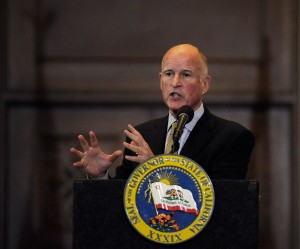by Spencer Michels
When you are the governor of California – first in the 1970s, then again starting in 2011– and when your father was governor before you (Edmund G. “Pat” Brown, 1959-1967) – speculation about family ties is bound to crop up. In the case of Governor Jerry Brown, who is about to turn 75, some have suggested some of the grand plans he is pushing this time around as governor are an attempt to live up to or even complete his father's legacy.

The original Governor Brown, Jerry's father Pat, is widely credited for spearheading the amazing California Water Project: dams and canals that transfer water that falls in Northern California to the thirsty south, which might be a desert otherwise. Were it not for Pat Brown’s California Water Project (plus the federal Central Valley Project that includes Shasta Dam) Los Angeles and San Diego might look a lot more sleepy, with their growth limited by lack of water.
The elder Brown also receives a lot of credit for building up the quality and the reputation of the University of California, arguably the premier public university system in the world. During Pat's reign, new college and university campuses were added, the state master plan for higher education was formulated, and the whole thing was held up as a model for the nation.
Pat Brown wanted to do even more, but he lost his bid for a third term as governor in 1966, to a movie star named Ronald Reagan. The Watts riots and unpopular anti-Vietnam war demonstrations on the campuses of the schools he had built did him in. Despite that defeat, the Brown legacy is strong.
